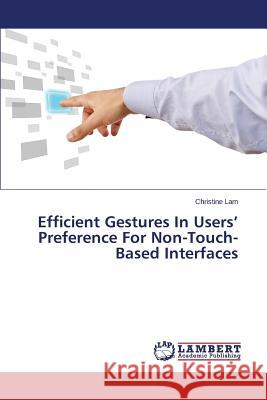Efficient Gestures In Users' Preference For Non-Touch-Based Interfaces » książka
Efficient Gestures In Users' Preference For Non-Touch-Based Interfaces
ISBN-13: 9783659769153 / Angielski / Miękka / 2015 / 100 str.
Since a few years ago, 3D gesture recognition systems have become the new phase in equipping users with the creativity and facility to communicate and interact with technologies. With the recent integration of 3D depth cameras in devices, such as smartphones, tablets, and gaming system (e.g. the Microsoft Kinect), free-space gestures are a relatively new means that can expand and surpass current interaction modality. Although novel, such mode has yet to be the preferred interaction, as it remains to be compared to the popular touch-based interaction, which provides smooth and facile user experience with simple intuitive gestures. Thus, defining intuitive non-touch-based gestures for interaction with gesture recognition systems are necessary to consider. Efficient Gestures In Users' Preference For Non-Touch-Based Interfaces investigates and identifies appropriate gestures by exploring the relationship between stress and user preference, as well as the manners in which users will engage with free-space gesture-driven interfaces. This book actively focuses on how gestural performance over time affects user inclination and fatigue during usage.
Since a few years ago, 3D gesture recognition systems have become the new phase in equipping users with the creativity and facility to communicate and interact with technologies. With the recent integration of 3D depth cameras in devices, such as smartphones, tablets, and gaming system (e.g. the Microsoft Kinect), free-space gestures are a relatively new means that can expand and surpass current interaction modality. Although novel, such mode has yet to be the preferred interaction, as it remains to be compared to the popular touch-based interaction, which provides smooth and facile user experience with simple intuitive gestures. Thus, defining intuitive non-touch-based gestures for interaction with gesture recognition systems are necessary to consider. Efficient Gestures In Users Preference For Non-Touch-Based Interfaces investigates and identifies appropriate gestures by exploring the relationship between stress and user preference, as well as the manners in which users will engage with free-space gesture-driven interfaces. This book actively focuses on how gestural performance over time affects user inclination and fatigue during usage.











